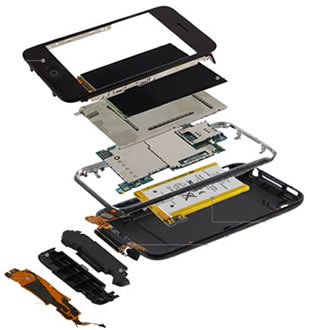From the outside, Apple's iPhone 3G S seems nearly identical to the 3G model released last year, but it's what's on the inside that matters they say. Indeed the company claims their latest and greatest smartphone offers twice the performance of its predecessor, longer battery life, and an improved camera. But who and what is behind the device's capabilities? Looking to answer that question, iSuppli has performed one of their accustomed teardown analyses, showing the source of components and estimating the manufacturing costs.

The market research firm estimates the new iPhone 3G S - or at least the 16GB model - has about $172.46 worth of materials and costs $6.50 to make. In total, that's a little over $4 more than the previous iPhone at release last year and quite a bit more than the Palm Pre. Toshiba scored the biggest single design win in the 3G S, with its 16GB MLC NAND flash costing $24. The 3.5-inch display module was the second priciest component estimated at $19.25, while costs of the associated touch-screen display electronics followed in third at $16.
Samsung supplies the applications processor, priced at $14.46, and Infineon continues to supply its PMB8878 baseband chip for an estimated $13. Meanwhile, Broadcom replaced discreet Wi-Fi and Bluetooth chips from Marvell and CSR, respectively, with a $5.95 part that handles both features in addition to having a tiny FM radio receiver on board - even though the iPhone currently has no FM-receiving features. A complete breakdown of the iPhone's components can be found at iSuppli's website.